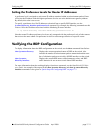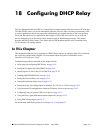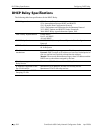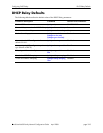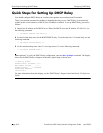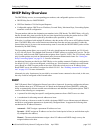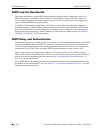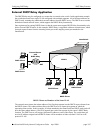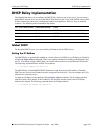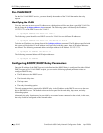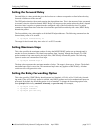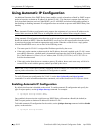
DHCP Relay Overview Configuring DHCP Relay
page 18-6 OmniSwitch 6600 Family Network Configuration Guide April 2006
DHCP and the OmniSwitch
The unique characteristics of the DHCP protocol require a good plan before setting up the switch in a
DHCP environment. Since DHCP clients initially have no IP address, placement of these clients in a
VLAN is hard to determine. In simple networks (e.g., one VLAN) rules do not need to be deployed to
support the BOOTP/DHCP relay functionality.
In multiple VLAN network configurations, VLAN rules can be deployed to strategically support the
processing and relay of DHCP packets. The most commonly used rules for this function are IP protocol
rules, IP network address rules, and DHCP rules. All of these classify packets received on mobile ports
based on the packet protocol type, source IP address, or if the packet is a DHCP request. See Chapter 8,
“Defining VLAN Rules,” for more information.
DHCP Relay and Authentication
Authentication clients may use DHCP to get an IP address. For Telnet authentication clients, an IP address
is required for authentication. The DHCP server may be located in the default VLAN, an authenticated
VLAN, or both. If authentication clients will be getting an IP address from a DHCP server located in an
authenticated VLAN, DHCP relay can handle DHCP requests/responses for these clients as well.
There are three relay forwarding options: standard, AVLAN only, and per-VLAN. All three support
DHCP traffic to/from authenticated clients. However, the AVLAN only option specifies that only DHCP
packets received on authenticated ports are processed. See “Setting the Relay Forwarding Option” on
page 18-11 for more information.
Using DHCP Relay with authenticated VLANs and clients also requires relay configuration of the router
port address of the authenticated VLAN. See Chapter 21, “Configuring Authenticated VLANs,” for more
information about this procedure.




